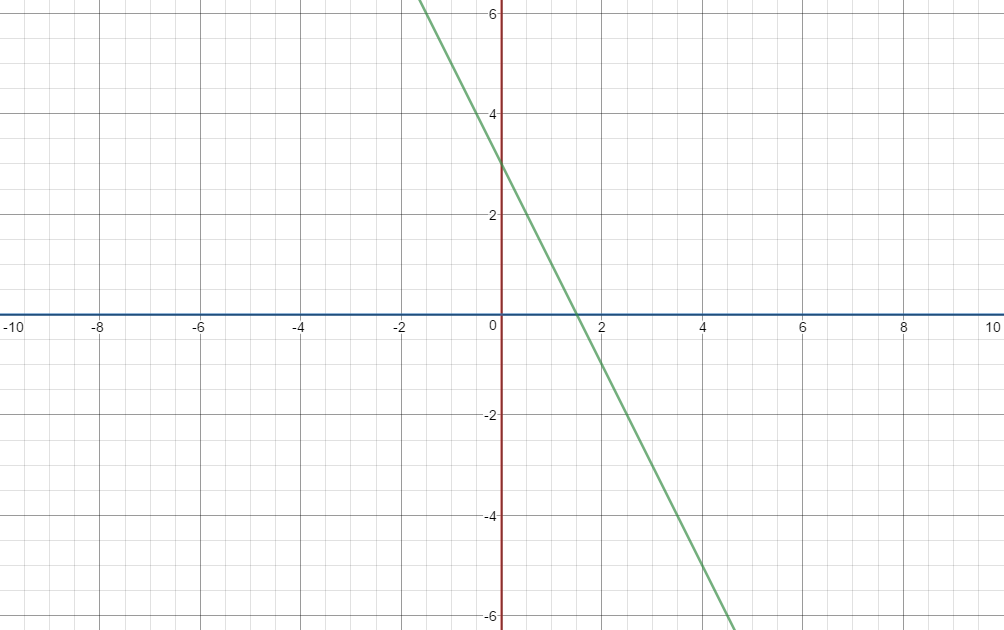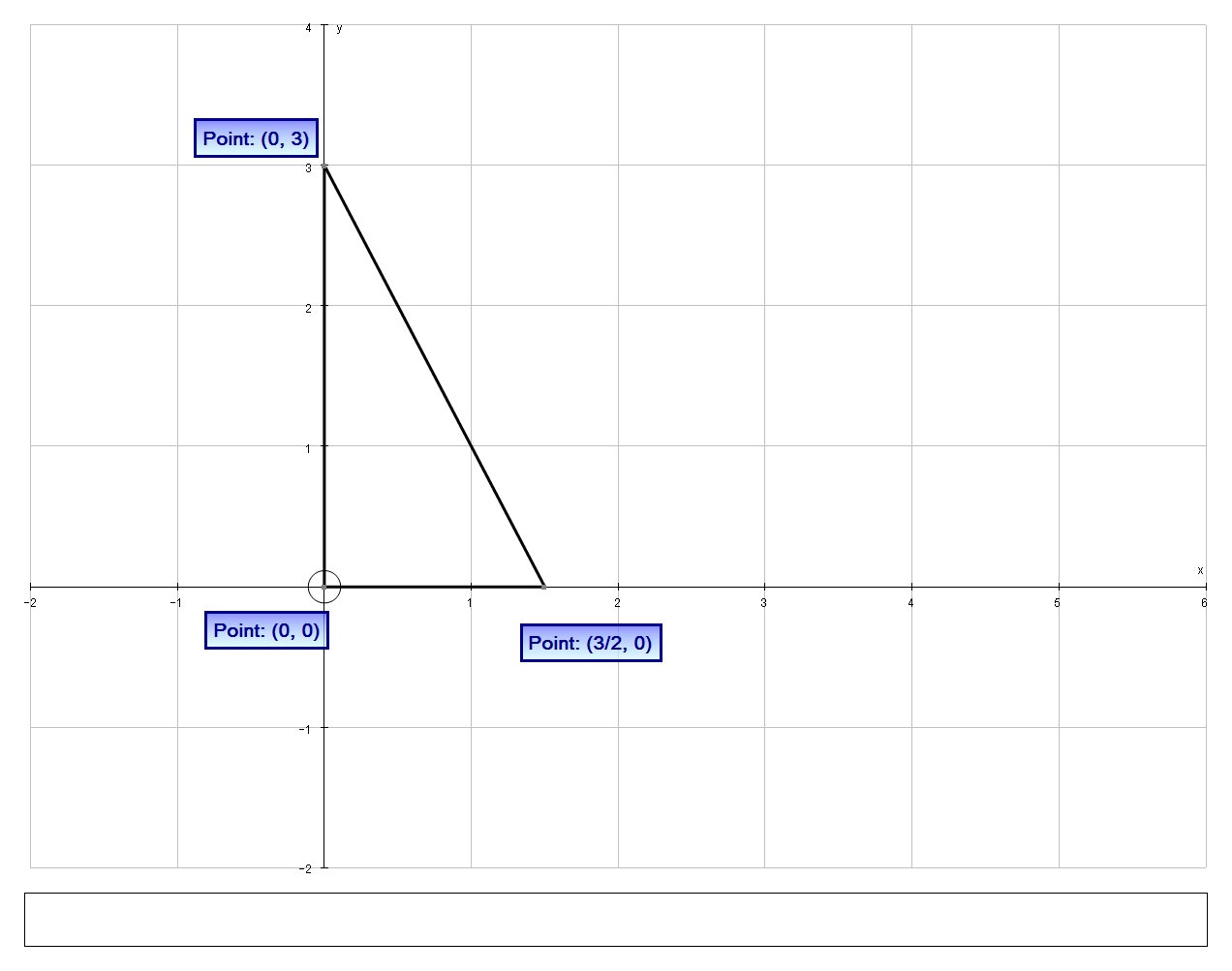How do you find the volume of the solid bounded by the coordinate planes and the plane #2x+y+z=3#?
4 Answers
Here is a reference to a similar problem that I will mimic.
Explanation:
The base of the solid is found my setting

From the above graph it is easy to see that x goes from 0 to 1.5 and y goes from 0 to
The height of the solid is
This allows us to write the following equation:
I used WolframAlpha to evaluate the integral:
V = 2.25
Volume =
Explanation:
The coordinate planes are given by
The given tetrahedron is a solid that lies above the triangle

The line joining
# y-0 = ((3-0)/(0-3/2)) (x-3/2) #
# :. y = (-2)(x-3/2) #
# :. y = -2x+3 #
And so the region
# R = {(x, y) | 0 le x le 3/2, 0 le y le -2x+3 } #
And the volume,
integral of the function
# :. V = int int_R (3-2x-y) \ dA#
# " "= int_0^(3/2) int_0^(-2x+3) (3-2x-y) \ dy \ dx#
As with all multiple integrals we work from the inside out, and we integrate wrt the appropriate variable, whilst treating other variables as constant so let's deal with the inner iterated integral first, and we get:
# int_0^(-2x+3) (3-2x-y) \ dy = [3y-2xy-1/2y^2]_(y=0)^(y=-2x+3)#
# " "= 3(-2x+3)-2x(-2x+3)-1/2(-2x+3)^2 - 0#
# " "= -6x+9+4x^2-6x-1/2(4x^2-12x+9)#
# " "= -12x+9+4x^2-2x^2+6x-9/2#
# " "= 2x^2-6x+9/2#
And so our double integral becomes:
# V = int_0^(3/2) 2x^2-6x+9/2 \ dx#
# \ \ \ = [ 2/3x^3-3x^2+9/2x ]_0^(3/2)#
# \ \ \ = 2/3(27/8)-3(9/4)+9/2(3/2) - 0#
# \ \ \ = 9/4-27/4+27/4#
# \ \ \ = 9/4#
Explanation:
The volume of a pyramid is one third the area of the base times the perpendicular height. The base is a right triangle in the
A "pyramid" could be defined as the result of joining each point on any plane shape (such as a square, circle, or any polygon) to a point (the vertex) outside the plane, and its perpendicular height would be the shortest distance from the plane to that vertex.
An yet another approach:
As in my earlier answer, The coordinate planes are given by
So we can define the tetrahedron vertices by the vectors
# vec (OA)=<<(3/2, 0, 0)>> #
# vec (OB)=<<(0, 0, 3)>> #
# vec (OC)=<<(0, 3, 0)>> #
The the volume of the tetrahedron is given by:
# V=1/6*abs(vec (OA) *(vec(OB) xx vec(OC)))#
Where,
We can evaluate this very quickly using the determinant with the vertex vectors as rows or columns):
# V = 1/6 | (3/2,0,0), (0,3,0), (0,0,3) | #
# \ \ = 1/6 (3/2)9 #
# \ \ = 9/4 #

